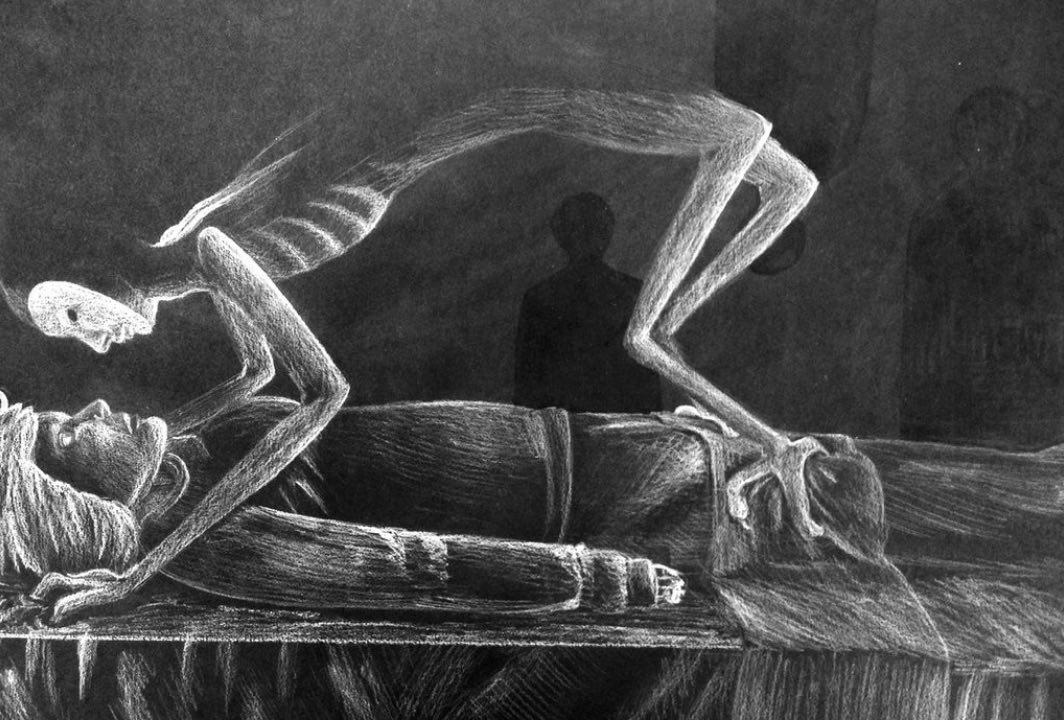In Old English folklore, a ‘mare’ is a mythological demon that disturbs and haunts people while they sleep, giving them bad dreams. Adding the word ‘night’ before mare gave people further association of this phenomenon as occurring during sleep. Even the Universal Etymological English Dictionary, a text published throughout the 1700s, defined nightmares as a ‘disease’ imposing a ‘great weight’ on people while they rest. Many cultures around the world have their own versions of a night or sleep demon. What these myths have in common, though, is a resemblance to the unnerving, immobilizing phenomenon known as sleep paralysis.
“[Sleep paralysis is] a discrete period of time during which voluntary muscle movement is inhibited, yet ocular and respiratory movements are intact,” Brian Sharpless and Jacques Barber wrote in their study in Sleep Medicine Reviews.
The condition manifests differently in each person. The three basic types of hallucinations are the imagined presence of an intruder, chest pressure, and feelings of levitation or other out-of-body experiences. More rare manifestations include the feeling of falling and fear of dying. For some people, like sexual violence survivors, sleep paralysis can evoke memories of past traumatic experiences, which makes the experience even more horrifying. Although most people report extreme fear, some describe experiencing pleasant feelings during a sleep paralysis episode.
Rapid eye movement (REM) is a normal part of the sleep cycle during which the brainstem paralyzes the body by inhibiting motor neurons; since people are usually unconscious for this, the paralysis passes unnoticed. However, if the REM cycle is interrupted in a sleep paralysis episode, an individual will experience the dreaming and paralysis of REM sleep while fully conscious, sometimes resulting in vivid hallucinations. These episodes can even be multisensory hallucinatory experiences.
Initially thought of as solely a symptom of narcolepsy, sleep paralysis is now understood as also occurring in individuals without sleep disorders. According to a study from 2011, sleep paralysis is not rare among the general population, with 7.6 per cent of study participants having experienced at least one episode in their lifetime. However, the researchers found the condition to be much more prevalent among students, with 28.3 per cent experiencing the phenomenon at least once.
Stress and sleep disorders are closely interrelated: Each amplifies the other in a positive feedback loop. With the Candian Organization of University and College Health reporting almost 90 per cent of students reportedly feel overwhelmed and more than 50 per cent express hopelessness, it is unsurprising that students are particularly vulnerable to the effects of sleep paralysis. One possible reason for this correlation is that students, due to their stressful lifestyles, experience regular sleep disturbances. Many students find it difficult to maintain regular and consistent sleep schedules because of sporadic class times and intense academic pressure. In a study published in Neuropsychiatric Disease and Treatment, student respondents reported several triggers for sleep paralysis, including stressful events, lack of sleep, fatigue, watching horror movies, and daytime naps.
With students in Canada increasingly overwhelmed by the stresses of academic life, it is important to recognize that, while sleep paralysis may be a strange sensation, it is not an uncommon one. It also serves as yet another reason to promote social and mental well-being on university campuses.








